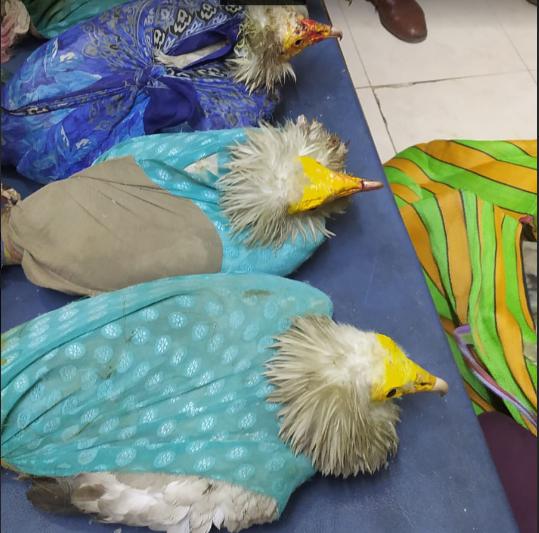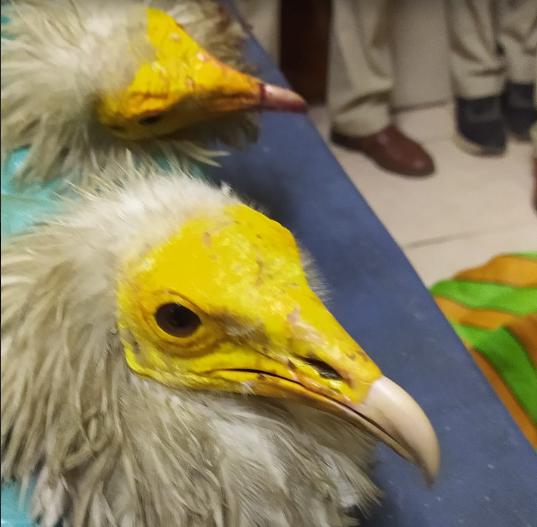Myths Linked With Vultures
Special task force (SIT) of Madhya Pradesh forest department is quizzing Fareed Sheikh (60) who was found in possession of 7 birds from a train at Khandwa railway station. He turned out to be only a carrier- like those in drug trafficking. Fareed said that Sameer Khan, a resident of Kanpur, handed him over the vultures and he was asked to transfer the consignment to Hashim at Manmad railway station in Maharashtra. " I was promised Rs 10,000 for the job", he said. The carrier was also found in possession of a return ticket from Manmand to Kanpur. SIT sources said that there was more than meets the eye. “ From Manmad, these birds would have headed to Mumbai and then, may be abroad by sea route, they suspect.
Also read: Of Owl Crisis and Sorcerers
This species qualifies as Endangered owing to a recent and extremely rapid population decline in India, presumably resulting from poisoning by the veterinary drug diclofenac, combined with severe long-term declines in Europe and Africa. Despite its huge range, populations of Egyptian Vulture are declining across the globe. This is due to a variety of threats like poisoning, poaching, electrocution and human disturbance. But smuggling of the bird was reported for the first time, sources said. Consumption of its body parts is also linked with many myths. According to illegalwildlifetrade.net ,”Vulture body parts are purchased for traditional medicine and other belief-based uses. Consumers expect relief from a variety of physical and mental ailments and greater success in life as they absorb the vultures’ abilities to ‘see into the future’. Vultures are therefore often the most sought-after bird species in trade.”
Intelligent Bird
It is also called the white scavenger vulture or pharaoh's chicken and is widely distributed from the Iberian Peninsula and North Africa to India. Egyptian vultures are considered to be intelligent as they are known for the use of tools to crack open large eggs, and twigs to gather wool to line its nest. Such tool use has been recorded in hand-reared chicks. As a scavenger its diet is varied and includes carrion, tortoises, organic waste and even mammalian feces. The species plays a hugely important role in the ecosystem, disposing of carcasses quickly thereby stopping the spread of disease.




In late 70s i heard that yellow beak of vulture and malabar pied hornbills beak is used in tantrik puja.
ReplyDelete